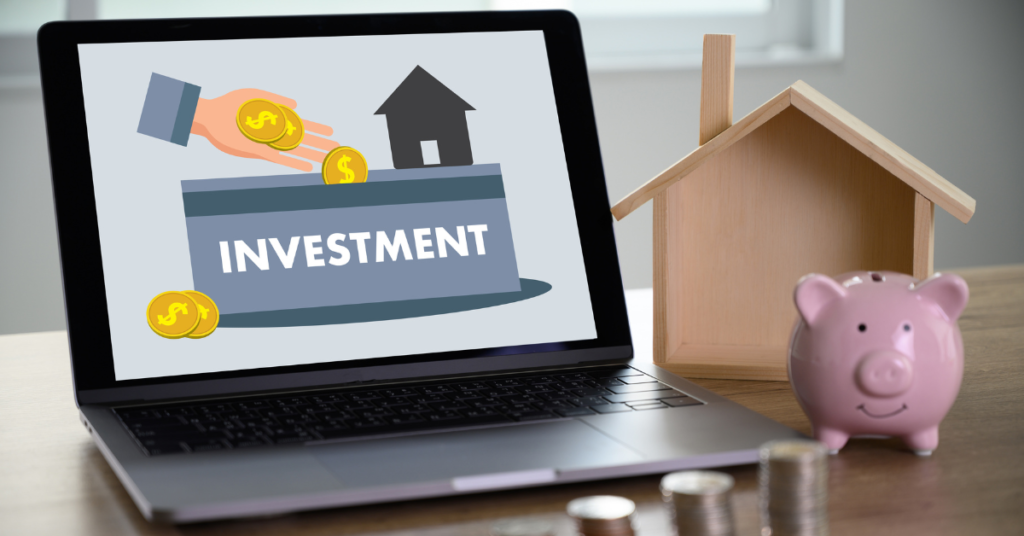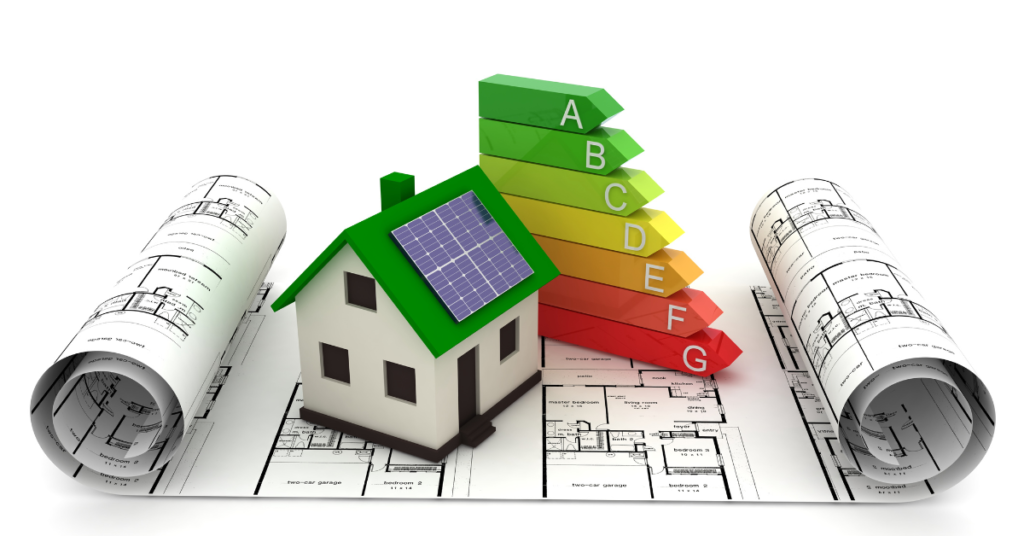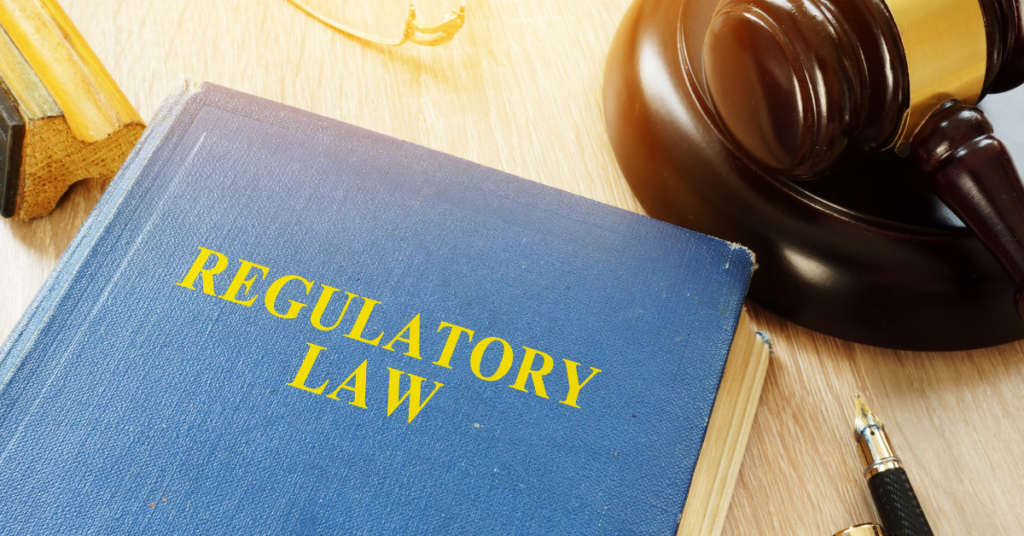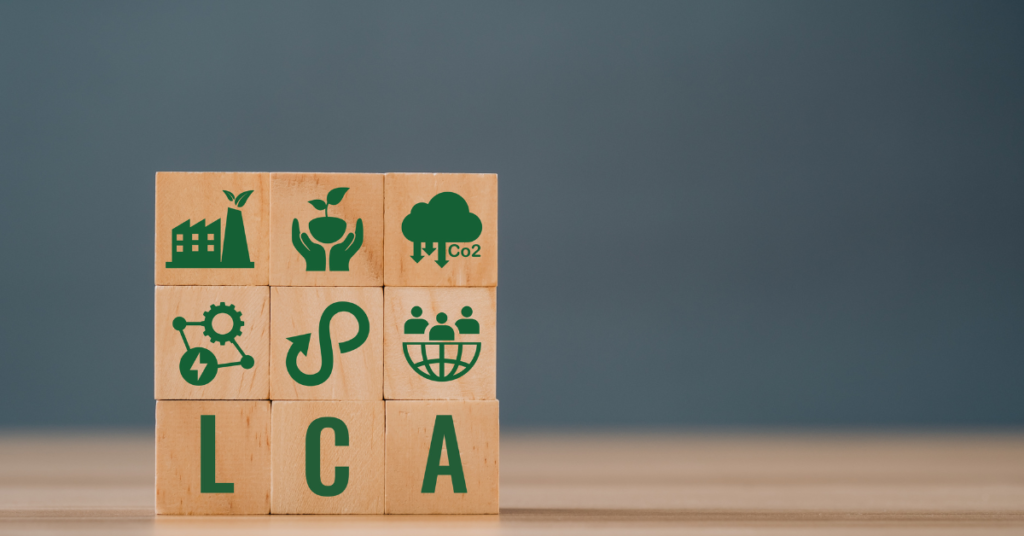Green Future: Investing in Eco-Friendly Properties
Welcome to the future of real estate investing—sustainability. In an era of environmental consciousness and eco-awareness, sustainable investing in real estate has emerged as a powerful force driving positive change. Join us as we explore the transformative potential of eco-friendly properties and why they are poised to shape the future of sustainable investing. Growing…

Welcome to the future of real estate investing—sustainability. In an era of environmental consciousness and eco-awareness, sustainable investing in real estate has emerged as a powerful force driving positive change.
Join us as we explore the transformative potential of eco-friendly properties and why they are poised to shape the future of sustainable investing.
Growing Demand for Sustainable Properties
The tide is turning, and consumers are demanding more than just four walls and a roof—they want homes that align with their values. As awareness of environmental issues grows, so does the demand for sustainable and eco-friendly properties.
This trend is reflected in the preferences of both tenants and homebuyers, who increasingly prioritize green features and amenities when choosing where to live. Here are some market trends and preferences in this regard:
1. Energy Efficiency

Tenants and homebuyers are showing a strong preference for properties with energy-efficient features such as LED lighting, high-efficiency HVAC systems, and insulated windows and doors. Energy-efficient appliances and smart thermostats that help reduce energy consumption and lower utility bills are also highly desirable.
2. Renewable Energy Sources
Properties equipped with renewable energy sources like solar panels or wind turbines are becoming increasingly attractive to eco-conscious tenants and homebuyers. The ability to generate clean energy on-site reduces carbon footprint and provides long-term cost savings.
3. Green Building Certifications
Properties certified by green building standards such as LEED (Leadership in Energy and Environmental Design) or Energy Star are highly sought after. These certifications ensure that buildings are designed and constructed with sustainable materials and practices, resulting in lower environmental impact and improved indoor air quality.
4. Water Efficiency
With growing concerns about water scarcity, tenants and homebuyers are interested in properties with water-efficient features such as low-flow toilets, faucets, and showerheads, as well as drought-resistant landscaping. Rainwater harvesting systems and greywater recycling also contribute to water conservation efforts.
5. Healthy Indoor Environment
There is a growing emphasis on indoor air quality and health, particularly in light of the COVID-19 pandemic. Tenants and homebuyers are looking for properties with features such as VOC-free paint, formaldehyde-free cabinetry, and ventilation systems that circulate fresh air and remove pollutants.
6. Green Spaces and Community Amenities
Access to green spaces, parks, and recreational areas within walking distance is increasingly valued by tenants and homebuyers. Properties located in eco-friendly communities with amenities such as bike lanes, electric vehicle charging stations, and community gardens are particularly appealing.
7. Sustainable Transportation Options
Proximity to public transportation hubs and bike-friendly infrastructure is a significant factor for many tenants and homebuyers who prefer eco-friendly commuting options. Properties with bike storage facilities and car-sharing programs are becoming more attractive in urban areas.
8. Waste Management and Recycling
Eco-conscious tenants and homebuyers look for properties with efficient waste management systems, including recycling programs and composting facilities. Buildings that prioritize waste reduction and promote recycling help minimize environmental impact.
Long-Term Benefits of Sustainable Investing
Sustainability isn’t just good for the planet—it’s good for the bottom line too. Sustainable real estate investments offer tangible returns over time in several key areas:
- Cost Savings: Energy-efficient buildings reduce utility expenses through lower electricity, water, and heating/cooling costs, resulting in higher net operating income (NOI) for property owners.
- Increased Property Value: Sustainable features such as green certifications, energy-efficient appliances, and eco-friendly materials enhance property value and marketability, leading to higher resale prices and greater return on investment (ROI).
- Higher Rental Income: Tenants are willing to pay premium rents for properties with sustainable features that offer lower utility bills, healthier indoor environments, and enhanced quality of life, thereby boosting rental income and occupancy rates.
- Risk Mitigation: Sustainable buildings are less vulnerable to regulatory changes, resource scarcity, and market fluctuations, providing long-term stability and resilience against economic and environmental risks.
- Enhanced Brand Reputation: Real estate developers and property owners with a commitment to sustainability benefit from positive brand recognition, attracting socially responsible investors, tenants, and partners, which can lead to further business opportunities and growth.
Overall, sustainable real estate investments deliver quantifiable financial returns while promoting environmental stewardship and social responsibility, making them increasingly attractive to investors seeking both profit and purpose.
Competitive Advantages of Eco-Friendly Properties
In a competitive real estate market, eco-friendly properties stand out from the crowd. Green features and certifications differentiate properties, attract tenants, and command higher rents or sale prices.
LEED (Leadership in Energy and Environmental Design) and ENERGY STAR are two renowned green building certifications that significantly impact property performance and marketability. These certifications increase marketability by appealing to environmentally conscious tenants and homebuyers, ultimately contributing to higher property values and competitive advantages in the real estate market.
LEED Certification
LEED certification recognizes buildings designed and constructed with sustainability, focusing on energy efficiency, water conservation, indoor air quality, and material selection. Properties with LEED certification typically command higher rents and sales prices due to their lower operating costs, enhanced indoor environmental quality, and reduced environmental impact. LEED-certified buildings also benefit from increased market visibility and attractiveness to eco-conscious tenants and homebuyers.
ENERGY STAR Certification
ENERGY STAR certification signifies that a property meets strict energy efficiency standards set by the U.S. Environmental Protection Agency. ENERGY STAR-certified buildings consume less energy, resulting in lower utility bills for tenants and homeowners. Additionally, ENERGY STAR-certified properties often experience higher occupancy rates and shorter vacancy periods, as tenants and homebuyers value the cost savings and environmental benefits associated with energy-efficient buildings.
Regulatory and Policy Support

Governments worldwide are increasingly recognizing the importance of sustainability in real estate development. Boston boasts a robust framework promoting sustainable development in real estate through a combination of local, state, and national initiatives. Here’s a breakdown:
Local
- Building Energy Reporting and Disclosure Ordinance (BERDO): This ordinance mandates large buildings to benchmark and publicly disclose their energy use, promoting transparency and encouraging efficiency improvements.
- Large Building Green Energy Retrofits Program: This program aims to significantly reduce energy consumption and carbon emissions in these buildings while improving occupant health, safety, and comfort. It also contributes to job creation and neighborhood revitalization
State
- Massachusetts Stretch Code: This code sets energy efficiency standards for new construction and major renovations, exceeding the national International Energy Conservation Code (IECC).
- Mass Save: This statewide program offers rebates and incentives for energy-efficient appliances, insulation upgrades, and other efficiency improvements in both residential and commercial buildings [Source: Mass Save].
National
- Energy Star: This EPA program helps businesses and individuals save energy through product labeling and certification.
- Federal Tax Credits: The federal government offers tax credits for investments in renewable energy systems and energy-efficient building upgrades.
These initiatives work together to create a strong push for sustainable development in Boston’s real estate market.
- Programs like GBIP and Mass Save offer direct financial rewards for achieving green certifications and implementing energy-saving measures.
- Energy-efficient buildings have lower utility bills, leading to long-term cost savings for property owners.
- Green buildings are increasingly sought after by tenants and buyers, allowing owners to command higher rents and sale prices.
- Meeting BERDO and Stretch Code requirements ensures properties comply with regulations and avoid potential fines.
By combining regulations and incentives, Boston fosters a strong environment for sustainable real estate development.
Innovation and Technology

Innovation is driving sustainability in real estate, with technology at the forefront of change. The integration of smart buildings, renewable energy systems, and green building materials is a promising trend in creating sustainable and efficient property developments.
1. Smart Buildings
Smart buildings utilize advanced technologies to optimize energy consumption, enhance occupant comfort, and streamline operations. Key features include:
- IoT Sensors: Sensors embedded throughout the building monitor environmental conditions such as temperature, humidity, and occupancy levels in real time.
- Building Management Systems (BMS): BMS integrates data from various sensors to automate HVAC, lighting, and other systems for optimal energy efficiency.
- Predictive Analytics: Machine learning algorithms analyze data to predict energy demand patterns, enabling proactive adjustments to building systems.
- Occupant Engagement Platforms: Apps or interfaces allow occupants to control their environment, providing feedback to improve energy usage and comfort.
2. Renewable Energy Systems
Incorporating renewable energy sources reduces reliance on fossil fuels and lowers carbon emissions. Key technologies include the following:
- Solar Power: Photovoltaic panels installed on rooftops or facades generate electricity from sunlight.
- Wind Turbines: On-site wind turbines harness wind energy to supplement power needs.
- Geothermal Systems: Ground-source heat pumps utilize the stable temperature underground to heat and cool buildings efficiently.
- Microgrids: Localized energy grids enable buildings to generate, store, and distribute renewable energy, increasing resilience and reducing dependence on centralized power grids.
3. Green Building Materials
Sustainable materials minimize environmental impact throughout the building’s lifecycle, from production to disposal. Examples include:
- Recycled Materials: Utilizing recycled steel, concrete, and glass reduces the demand for virgin resources.
- Biobased Materials: Materials derived from renewable sources such as bamboo, cork, and hemp offer eco-friendly alternatives to traditional materials.
- Low-Emission Products: Paints, adhesives, and sealants with low volatile organic compound (VOC) emissions improve indoor air quality.
- Energy-Efficient Insulation: Insulation made from recycled materials or natural fibers enhances thermal performance and reduces heating and cooling costs.
Best Practices for Integration

1. Holistic Design Approach
Incorporate sustainable features from the initial design stage to maximize effectiveness and minimize retrofitting costs.
2. Life Cycle Assessment (LCA)
Evaluate the environmental impact of materials and technologies throughout their lifecycle to make informed decisions.
3. Collaboration and Knowledge Sharing
Engage with stakeholders, industry partners, and experts to exchange ideas, learn from successful projects, and address challenges.
4. Regulatory Compliance and Certifications
Adhere to green building standards such as LEED or BREEAM (Building Research Establishment Environmental Assessment Method) to demonstrate commitment to sustainability and qualify for incentives.
Investment Strategies and Opportunities
Incorporating sustainable properties into your real estate portfolio offers not only environmental benefits but also the potential for long-term financial returns and risk mitigation. Here are some investment strategies and opportunities to consider:
1. Diversification
Including sustainable properties in your portfolio can provide diversification benefits by reducing exposure to risks associated with traditional real estate sectors. Sustainable properties tend to have different risk profiles and performance drivers compared to conventional properties, thereby potentially enhancing overall portfolio resilience.
2. Risk Management
Sustainable properties often boast lower operating costs, higher tenant satisfaction, and reduced exposure to regulatory risks associated with energy efficiency and environmental regulations. By investing in these properties, you can hedge against risks such as volatile energy prices, regulatory changes, and physical risks related to climate change.
3. Portfolio Optimization
Incorporating sustainable properties into your portfolio allows for optimization based on environmental, social, and governance (ESG) criteria. ESG considerations can be integrated into investment decision-making processes to identify opportunities that align with your sustainability goals while potentially enhancing financial performance.
4. Investment Opportunities

Development Projects
Investing in the development of sustainable properties, such as green buildings or eco-friendly residential communities, can yield attractive returns while contributing to environmental sustainability. These projects often benefit from increasing demand for energy-efficient and environmentally friendly spaces.
Retrofitting Initiatives
Retrofitting existing properties to improve energy efficiency, enhance indoor air quality, and incorporate renewable energy systems presents another investment opportunity. Retrofit projects can generate cost savings, increase property value, and attract environmentally conscious tenants.
Green Bonds
Green bonds are fixed-income securities issued to finance projects with environmental benefits, including sustainable real estate developments. Investing in green bonds allows you to support eco-friendly initiatives while potentially earning competitive returns.
5. Due Diligence
Conduct thorough due diligence to evaluate the sustainability credentials and financial viability of potential investments. Assess factors such as energy efficiency, environmental certifications (e.g., LEED certification), location-specific risks (e.g., climate-related hazards), and market demand for sustainable properties.
6. Engagement and Collaboration
Engage with developers, property managers, and other stakeholders to understand their sustainability strategies and performance. Collaborating with industry partners can help identify emerging trends, best practices, and innovative investment opportunities in the sustainable real estate sector.
7. Long-Term Perspective
Adopt a long-term investment horizon when integrating sustainable properties into your portfolio. Initial investment costs may be higher for sustainable projects, but the potential for long-term value creation through reduced operating expenses, increased asset resilience, and positive environmental impacts can outweigh short-term costs.
Conclusion
As we conclude our journey into the world of sustainable investing in real estate, one thing is clear. Eco-friendly properties are the future. With their long-term financial benefits, competitive advantages, and positive impact on the environment, sustainable properties are a winning investment choice.
Invest in a green future with Green Ocean Property Management! Contact us today to explore our portfolio of eco-friendly properties. Let’s make a positive impact on the environment while enjoying sustainable living.
Don’t miss out on the opportunity to invest in a brighter, greener tomorrow. Reach out now and join us in shaping a sustainable future!
How to Market Your Investment Property to a Wider Audience
Are you a real estate investor in Boston, Massachusetts, looking to attract a wider audience for your investment property? Effectively marketing your property is essential to maximize its visibility and reach potential tenants who may be the perfect fit for your rental units. You can expand your reach and draw a broader audience by implementing…
Strategies for Maximizing Rental Property Profitability
Rental property investments can be an excellent approach to generating passive income and wealth over time. However, maximizing rental property profitability requires careful planning and management. Here are some strategies for maximizing your rental property profitability. Set the Right Rental Price Setting the right rental price is vital to maximizing profitability. If you…
The Role of Regular Maintenance in Property Management
As a property owner, it’s crucial to understand the importance of regular maintenance. Property management is not just about collecting rent; it’s also about ensuring that the property is well-maintained and in good condition. Regular maintenance helps retain the property’s value and guarantees it is safe for tenants. This article will discuss the significance of…








